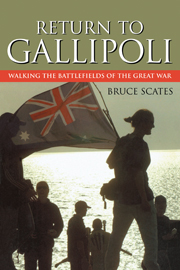Book contents
- Frontmatter
- Contents
- List of illustrations
- Note on money, measurement and terminology
- List of abbreviations
- Acknowledgments
- Introduction: journeys into history
- Part I Loss, Memory, Desire
- Part II Family Journeys
- Part III Soldiers' Tales
- 5 ‘To see old mates again’: diggers return
- 6 ‘A grave that could have been my own’: service pilgrimages
- Part IV Testament of Youth
- Conclusion: journey's end
- Epilogue: The ghost of memory
- Notes
- Survey Informants
- Index
5 - ‘To see old mates again’: diggers return
Published online by Cambridge University Press: 22 September 2009
- Frontmatter
- Contents
- List of illustrations
- Note on money, measurement and terminology
- List of abbreviations
- Acknowledgments
- Introduction: journeys into history
- Part I Loss, Memory, Desire
- Part II Family Journeys
- Part III Soldiers' Tales
- 5 ‘To see old mates again’: diggers return
- 6 ‘A grave that could have been my own’: service pilgrimages
- Part IV Testament of Youth
- Conclusion: journey's end
- Epilogue: The ghost of memory
- Notes
- Survey Informants
- Index
Summary
Fifty years to the day after the first Anzac landing, a party of old diggers braced themselves again for the beaches. To some, it must have seemed that history was repeating itself. The waters off Gallipoli were dark and smooth, the sky was clear and a soft breeze whispered shoreward. There was the same ‘staggering’ and ‘stumbling’ on the deck, the same quick farewells as men lumbered into the landing craft, the same unspoken sense of nervous excitement.
As the boats swung out to the shore, a crescent moon cast its last light across the beaches. For a moment its gleam was frozen in the still deep waters, for a moment the men fell silent. Then conversation erupted and (like C. E. W. Bean fifty years earlier) a quick and keen historian rushed to record them: ‘“This is the thrill of my life”, said one man. Another sent a kookaburra call towards the cliffs … One man was saying to himself: “A big feller was lyin' on the beach, dead …”’
There were seventy-one old diggers in the boats. All but one claimed to be ‘first dayers’, men who scaled the cliffs in 1915 and seized the shore for Australia. Left behind on their cruise ship were 230 other pilgrims; eighty of the 300-strong contingent were from New Zealand. Together, they constituted the largest party of World War One veterans ever to leave Australia and the first to enjoy any kind of subsidy for their journey.
- Type
- Chapter
- Information
- Return to GallipoliWalking the Battlefields of the Great War, pp. 125 - 154Publisher: Cambridge University PressPrint publication year: 2006



